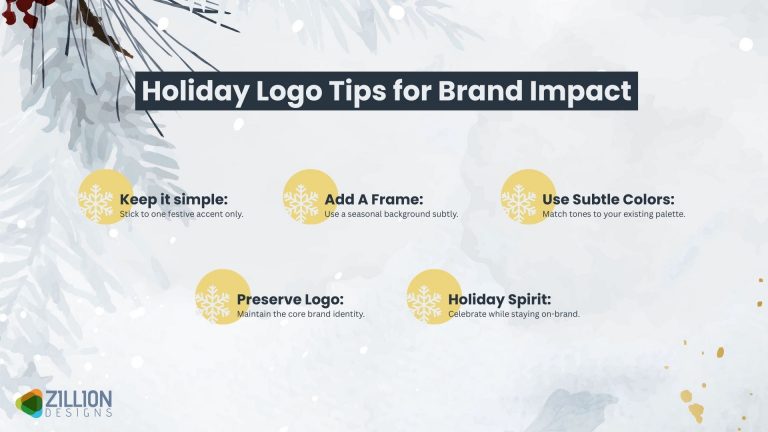Optimizing long-tail keywords is not a new practice. In fact, if you have been in the SEO game for a long time you might be familiar with this strategy. These aren’t just any keywords, though; they are specific phrases with the intent behind them.
Although long tail keywords have little search volume, still these can bring highly targeted visitors to your website.
Okay, so the big question is what are long tail keywords? Long-tail keywords are detailed, yet specific phrases that target what users type in the search engine.
For instance, a long tail keyword would be “best WordPress themes for ecommerce”
You get the idea. Now to form a better understanding of long-tail keywords let’s explore the concept of the search demand curve. Long tail keywords didn’t get the name only because of their length but the real reason is the way they are formed on the search demand curve.
Let’s break down the search demand curve. If you look at the graph you will see that it is divided into three sections:
The Fat Head: These high-volume broad keywords are the hardest to rank for. These can be “real estate” or “home decor”.
The Chunky Middle: These have slightly less competition but are still hard to rank for because of their large search volume. These can be “real estate agents” or “home decor ideas”.
The Long Tail: These are keywords that you want to go with. Although they have a low search volume, these keywords have no competition at all. These can be “Top-rated real estate agents for luxury homes”
Importance of Long-Tail Keywords
Now, let’s explore what makes these long-tail keywords an invaluable asset in any SEO strategy.
1. Easier to Rank
SEO is a vast field where experts use relevant keywords to stand out. There is tough competition to get the top spots on the first page of the search engine.
You might have noticed that branded keywords are very generic and broad. Despite being popular these keywords are the hardest to rank for.
For example, if you search for the keyword “bakery” you will get tons of search results possibly in hundreds of thousands. You see based on the number of results, it’s really hard to rank with this keyword.
This is called the “Keyword Difficulty”. This shows how difficult it is to rank for a particular keyword in terms of percentage. If a keyword has a greater keyword difficulty, it will be hard to rank.
That’s where long-tail keywords become useful. These keywords are specific and target the search intent. One thing that makes long-tail terms handy is that the SEO giants have surpassed them, which means there are a lot more opportunities since the field is less competitive.
2. Targeted Traffic
It’s easy for long-tail keywords to match with what the users are searching for. This makes them more relevant than the head terms.
Although they might not match the exact words and sentences that people type into search engines, still they are more specific to their queries.
By building your content around these long specific phrases, you can have a better chance at ranking on top and making your audience stop and click.
The reason why these keywords are high converting is because they tend to be specific. For instance, if someone is searching for “cheapest last minute hotels”, it is very likely that the person is looking to book a cheap hotel or in other words ready to purchase or convert.
So, if you are in the hotel and hospitality industry you might want to look for such long tail keywords so customers can find you in the top results.
Meanwhile, head keywords like “hotels” or “vacation resorts” are broad and very competitive. This shows that the searcher is just browsing the web and is not ready to make a decision yet.
3. Less Expensive Pay-Per-Click Advertising
If you have ever encountered PPC or run Google Ads, you would know that generally high-volume keywords have a high cost per click (CPC).
Since long tail keywords have low search volume, it’s a lot cheaper to optimize them in your ads. As we have discussed long tail keywords are specific, targeted, and have a higher conversion rate. This means these keywords can help you get the right customers to your site.
You might be wondering if there is any downside to going with these long-tail keywords. Yes, there is one, these keywords don’t have as many monthly searches as their counter-head terms.
According to Semrush, many factors determine whether a particular keyword has a good search volume. These include keyword competition, cost, etc.
Let’s suppose you have a low-competition keyword with a low cost, in this case even 100 monthly searches are a good number. Because low competition means you can rank for the keyword and ultimately convert the visitors.
Replace it with a high-competing, high-cost keyword and now 100 monthly searches don’t sound good at all. In this case, competition to rank on the keyword is too high and very unlikely to get a top spot in the search results.
4. A Variety of Content Prospects
Long-tail keywords are specific, that is the reason these are easier to target SEO pages on your website.
Long-tail keywords can help you discover a variety of content in different categories. This also contributes to the overall browsing experience on the internet and gives people the right information at their disposal.
The use of long-tail keywords can serve numerous purposes like motivating users to dive into a diverse range of topics on your website and get solutions to the problems that drive them to your website in the first place.
An example of this could be incorporating phrases like how to design a small business brand identity if your website caters to designers or small business owners. Doing this will allow your customers to land on specific, accurate, and optimized content pages that will boost your website’s SEO.
If you add these specific phrases to your content, you are more likely to grab the attention of people who are actively searching to buy your products or services. Or if you offer design services, consider using keywords like get fashion brand logos or web design services to increase visibility in SERPs.
Tips to Find the Right Long-Tail Keywords
Identifying the right or the exact match long-tail keywords requires a combination of skill, data-driven insights, and intuition. Here are some tips to guide you on your way:
1. Start With The Righ Keyword Research Tools
Use tools like Google Keyword Planner, SEMrush, Keyword Everywhere, or Ahrefs to map out the long-tail phrases that your customers are searching for.
Pay attention to the difficulty of these search terms to find the right mix between high and medium search volumes with the right intent to cater to people’s queries.
For instance, if you are in a cleaning business then the major keywords would look something like “house cleaning services” or “commercial cleaning services near me”.
Image source: author
2. Put Your Competitor Research Hat On:
Competitor research is much more than spying on your competing businesses. If you look at the keywords that your rivals are optimizing, you might be able to direct their traffic to your SEO pages.
By doing that, you also gain knowledge of SEO tactics that work in your field.
3. Tune into User-Generated Content
Check out the comment sections in blogs, newsgroups, and on social media pages and other community forums that are related to your niche. This is where you can hear your user’s voice.
Long-tail keywords are like treasure maps that searchers use to show you what they want and need. If you use these search terms carefully, they will help you plan your content strategy and write what people want to read.
4. Related Searches and Google Autocomplete Work
As you put your selected phrase into Google, the search engine gives you ideas for similar searches at the bottom of the page. These search terms can be really useful to add to your content. You can use a mix of these to come up with your own long-tail keywords.
Let’s say you want to learn more about SEO practices, so you search in Google for the best SEO practices. Here are the related search results for your search query.
s
How to Add Long-tail Keywords in Content
We have discussed some tips on how you can utilize these long search queries in your content. Now let’s see how can you write content that includes long-tail keywords.
1. Consider Search Intent
One of the most important parts of an effective SEO strategy is identifying users’ search intent and then creating content according to their needs.
Focus on creating content not only to get a higher ranking in search results but also to provide high-quality informational resources that solve the queries of the searchers.
Now to optimize your content, it’s best to start by adding two to three long tail phrases. Blend these keywords naturally in your content and try not to overstuff your content with keywords.
Google strictly prohibits this practice. To find out more you can read about keyword stuffing in Google’s Spam Policies.
In case you are wondering, there are four types of search intent you can target with any long-tail keyword you want to use:
Informational: This shows people are looking for information (e.g. “What are the benefits of gluten-free bread?”).
Navigational: This shows people are looking for a specific website or a page (e.g., “Starbucks fall menu”).
Transactional: This intent shows people are ready to make a purchase (e.g., “Buy custom birthday cakes near me”).
Commercial: This shows users are researching before making a purchase (e.g., “Best gluten-free bakeries with free delivery”)
2. Start With Your Buyer Personas
Let’s start from square one, what is buyer persona? To put it in simple words, buyer persona is a somewhat accurate representation of your ideal customers.
Marketers create it by conducting audience research and understanding the market. Mainly it is done by gathering insights through surveys or interviews from both existing and potential customers.
These client avatars or buyer personas include information about your potential customers like demographics, behavior, interests, and challenges.
You might be thinking about what types of businesses need buyer personas. Well, the truth is all types of businesses benefit from buyer personas because every business wants to target their customers effectively and grow.
Creating a buyer persona also helps you match user intent, and understand your target audience’s wants and needs. Once you get to know that, you can tweak your long-tail keywords to match user intent effectively.
There is a reason why companies put so much effort into creating these customer personas. These let you be in your customers’ shoes to determine their questions, needs, and online browsing behaviors.
3. Write Content For Relevant Keywords
After you have decided whether to write a blog or a web page. Focus on creating valuable information that matches the user’s intent, so they click on your website and spend time interacting with your content.
If you create content that adds value to people. Google considers it a positive sign that your content is relevant to the visitors.
This will ultimately boost your site’s rankings. So, once you have picked your long tail keyword.
Here are a few places in your content where you can add your keyword to an optimized web page, blog, or product page:
Compelling Headline:
Your headline should be specific and intriguing to draw readers in. It’s also a great opportunity to put your primary keyword.
Audience Focus:
As we discussed about creating a buyer persona previously. It helps you write with your audience in mind with relevant keywords they search for.
Focused Topic or Keywords:
Each article should have a focused topic or a keyword so you can provide clear and relevant information.
Valuable Content:
Provide information that addresses readers’ needs and questions. Make sure people find your content useful.
Structured Outline:
Structure your content with subheadings H2 and H3 tags. Add your keywords in these places since people only skim through the headings.
4. Place Your Keywords Strategically
It may seem obvious to you if you are already familiar with the basics of content writing or SEO, but beginners should be aware to include long-tail keywords in your page’s title and header tags if you can.
Now there is a lot of debate on whether you should use your keyword in the first sentence of the first paragraph of your content.
But we suggest that if you can incorporate your keyword naturally in the content then there is no harm in doing it.
Most of the time, these subheadings contain just the right keywords for them to be effortlessly identified by search engine crawlers. If the nature or meaning of your content isn’t compromised, long-tail keywords can also be integrated with the subheadings.
Let’s say your long tail keyword is “best baseball hat for beginners”. You see it’s a bit long phrase and might be difficult to fit into a sentence content without sounding salesy.
Here you can break down your keyword or try a few variations a little. Make sure you are not compromising on readability.
One more place where you can optimize your keyword is the meta tag. These meta tags are a short description or summary of what your article or webpage is about. You can use this opportunity to add your long tail keywords.
5. Create Topic Clusters
Unless you have been living under the rocks for the past couple of years, you might know that Google now prefers and ranks topic-based content.
You may have already seen it as many SEO giants like Ahref, Semrush, etc are now exploring this strategy of creating and linking content in a “topic clusters” model.
Since the competition to rank in the top searches is immense. Google has upgraded its algorithms to promote content-focused SEO sites.
To create a topic cluster model, you need to figure out a “pillar” page. This page will be the main hub for similar or related content topics that will be linked to your main pillar page.
Doing this signals the authority of your main content page and as a result, Google ranks it higher for the related topics that come under it.
Topic clusters are not just a way to get a better ranking on the search engine but it also help you organize your content and improve your site structure so crawlers can index it.
So how can you apply this strategy to long-tail keywords? Well, as we discussed in previous tips, pick a long-tail keyword term, then optimize your pages around it.
Once you do that you can start building clusters by linking from your pages that are optimized with long long-tail phrases to pages that target your primary keywords or pillar pages.
To Wrap Up:
Now that you understand the impact of long-tail keywords in the field of SEO. It’s time you start optimizing them in your website content. These long-tail phrases may not stand out in high-traffic searches, but their real value lies in their ability to precisely target the unique needs and queries of the searchers.
Rather than relying fully on head keywords such as “SEO services,” it is a far better practice to focus on long-tail phrases like “affordable SEO services for small businesses in 2024.”
So the next time you sit with your SEO team to brainstorm a new keyword strategy, don’t miss out on long tail keywords.
The post How to Leverage Long-Tail Keywords for SEO of Your Website appeared first on ZD Blog.




